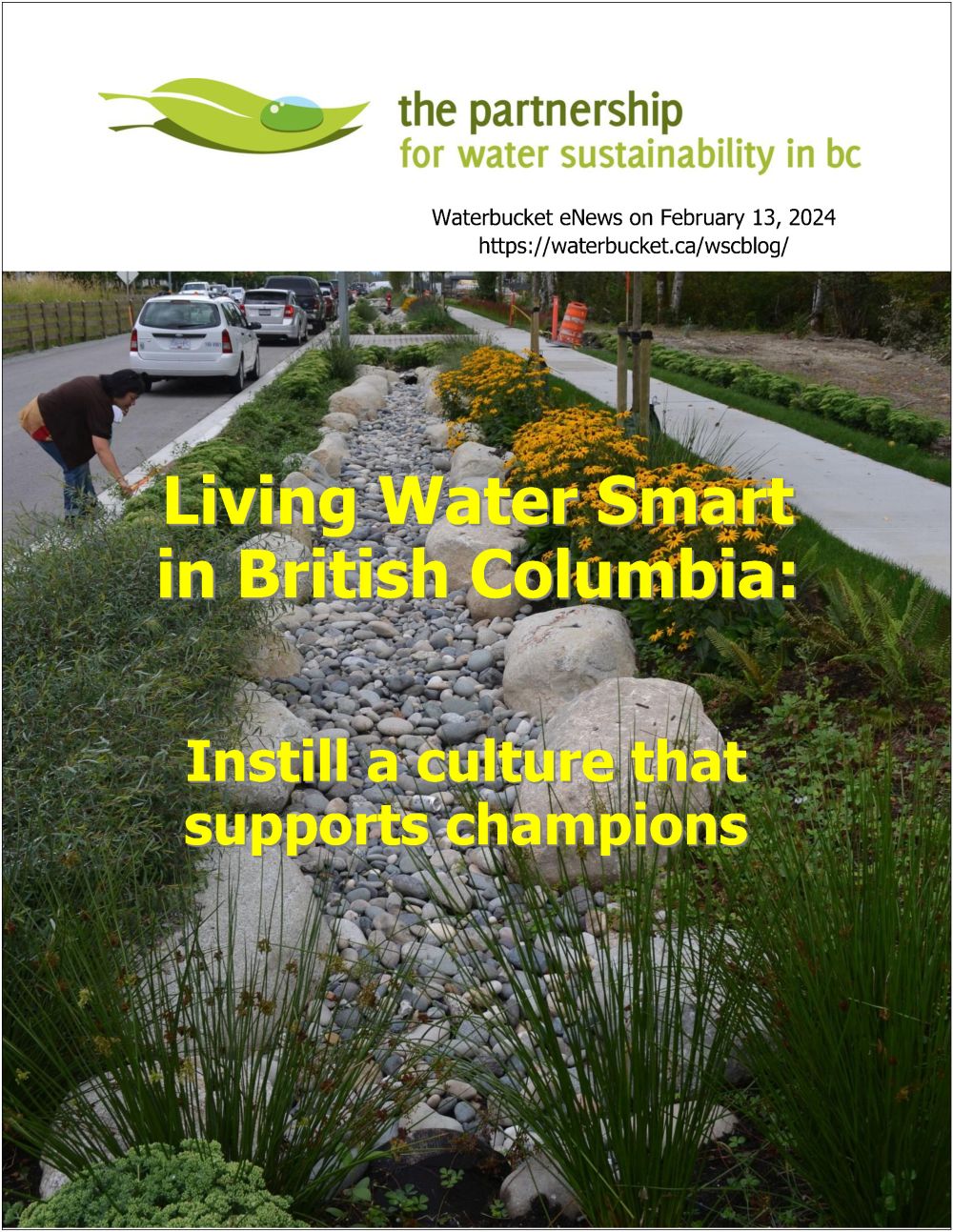DESIGN WITH NATURE TO CREATE LIVEABLE COMMUNITIES AND PROTECT STREAM HEALTH: “Replacement of curb-and-gutter with a blue link rain garden is a perfect illustration of integration in action. I said to staff just do it,” stated Ramin Seifi, former General Manager of engineering and planning with Langley Township in the Metro Vancouver region
Note to Reader:
Published by the Partnership for Water Sustainability in British Columbia, Waterbucket eNews celebrates the leadership of individuals and organizations who are guided by the Living Water Smart vision. The edition published published on February 13, 2024 features the story behind the story of Ramin Seifi, former General Manager of engineering and planning with Langley Township. He is a visionary leadership and champion for implementing green infrastructure to achieve ‘water balance’.
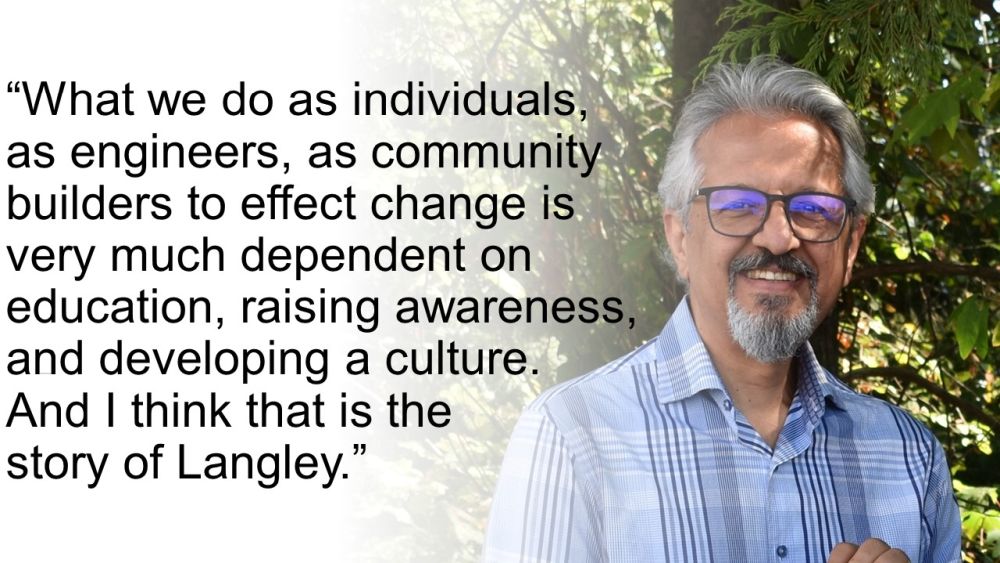
Instill a culture that supports champions
Ramin Seif is a visionary leader. He joined Langley Township in 2000 and served until 2023. He carved out a one-of-a-kind role as general manager of a portfolio that combined planning and engineering. His dual role was an essential ingredient in enabling organizational integration, horizontally and vertically.
Green infrastructure in Langley
“Beginning in the early 2000s, the story in Langley was one of collaboration and support from all levels, including the politicians. And then, of not being afraid. Being courageous enough to try and see how you do. But more importantly than that, it was one that developed a culture. And it takes time, it takes effort, it takes perseverance. It takes willpower to develop a culture,” states Ramin Seifi.
Resource protection – for groundwater supply and fisheries habitat – is the original driver for implementing ‘green infrastructure’ in Langley. For the past two decades, Township staff have learned and adapted.
Rain gardens are standard practice
Township of Langley experience shows what can be accomplished when Council, the community and staff are in alignment and embrace a ‘green culture’. Langley has led by example and implemented a ‘water balance’ approach to large-scale residential projects.
Rain gardens are standard practice in the Township to achieve water balance. Moving ahead on a ‘green’ platform gained momentum as standard practice evolved through ‘learn by doing’ experience. Successive councils found it easy to support the initiatives of staff.
Green Infrastructure Services is one of three departments that make up the interdisciplinary Development Services group. Departmental responsibilities include rain garden implementation through the development approval process.

EDITOR’S PERSPECTIVE / CONTEXT FOR BUSY READER
|
|
|
Evolution from curb-and-gutter to blue links
“Langley’s approach to achieving water balance through green Infrastructure continued to evolve as successive neighbourhoods were built over the past two decades. In the beginning, the focus for Green Infrastructure was on what could be achieved within greenways,” continued Kim Stephens.
“Langley staff then turned their attention to rain gardens. Building on their history of successes, their next evolution was implementation of blue links, which is another name for rain gardens.”
It made sense
“The term ‘blue link’ describes the purpose of the current drainage standard in Langley. It replaced the traditional curb-and-gutter detail for all but arterial roadways. The blue link is symbolic of the transformational change which has taken root in the Township in the 21st century as designing with nature became the ‘new normal’.”
“Replacement of curb-and-gutter with a blue link rain garden is a perfect illustration of integration in action. Everyone could see that it made sense. Because I could see the need from all angles, I said to staff ‘just do it’. Integration helps everyone get it,” reports Ramin Seifi.

STORY BEHIND THE STORY: Instill a culture that supports champions – extracts from conversations with Ramin Seifi
The “story behind the story” that follows weaves quotable quotes by Ramin Seifi into a succinct storyline. This preview about his experience in leading and managing change is extracted from an interview included in a legacy resource that the Partnership will release later in 2024.
“A presentation many years ago by UBC professor Patrick Condon put me on the path to integration. Patrick’s storytelling made me realize that everything we do has an effect somewhere else. What Patrick said in his presentation was eye-opening and oh so impactful,” recalls Ramin Seifi.
“Patrick Condon was ahead of his time in connecting dots. To get audience attention, I remember that he framed it this way. Arctic warming and the melting sea ice, which the declining polar bear population relies on to survive, is directly linked with how we convey stormwater to our rivers and oceans and the use of curb and gutter in urbanization of our communities.”
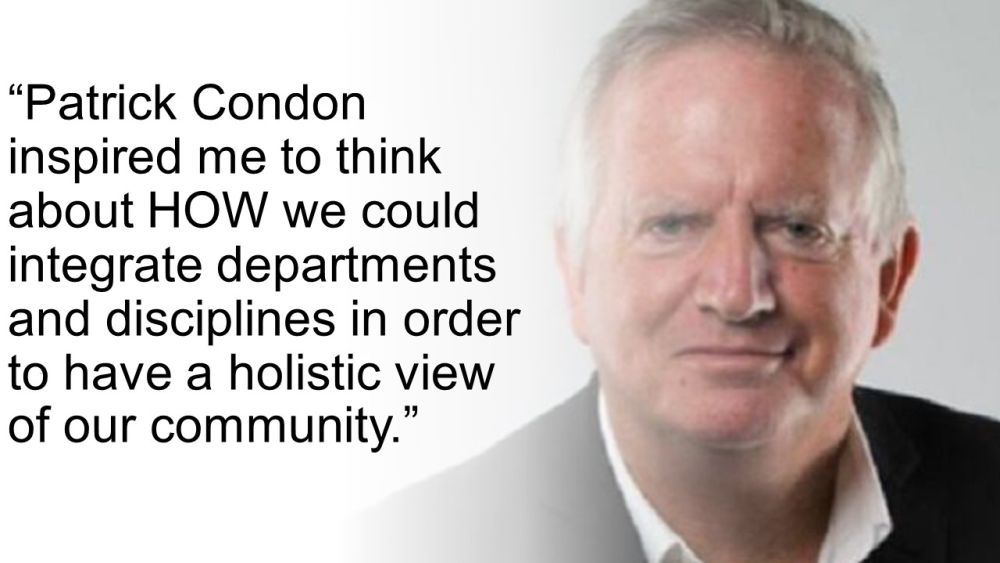
Integration of engineering and planning portfolios benefits community development
“When Colin Wright retired as general manager of engineering in 2011, our Chief Administrative Officer listened when I presented the case for me doing both jobs, engineering and community development.”
“The Township needed more integration to respond to the demands on infrastructure and the risks to the environment resulting from rapid population growth. Achieving integration depended on the Township having a better structure.”

Instill confidence to learn by trying
“When I reflect on my time with Langley Township, I hope my lasting contribution is the confidence that I instilled in people to not be afraid of trying something and being a champion for it. It is only through collaboration, from buy-in at all levels, that we can all be successful.”
“Instilling a culture takes years. We developed a culture that I hope future generations now take forward. It began humbly. It began with stormwater management and thinking about how we could retain water and allow it to infiltrate as opposed to getting rid of it quickly.”
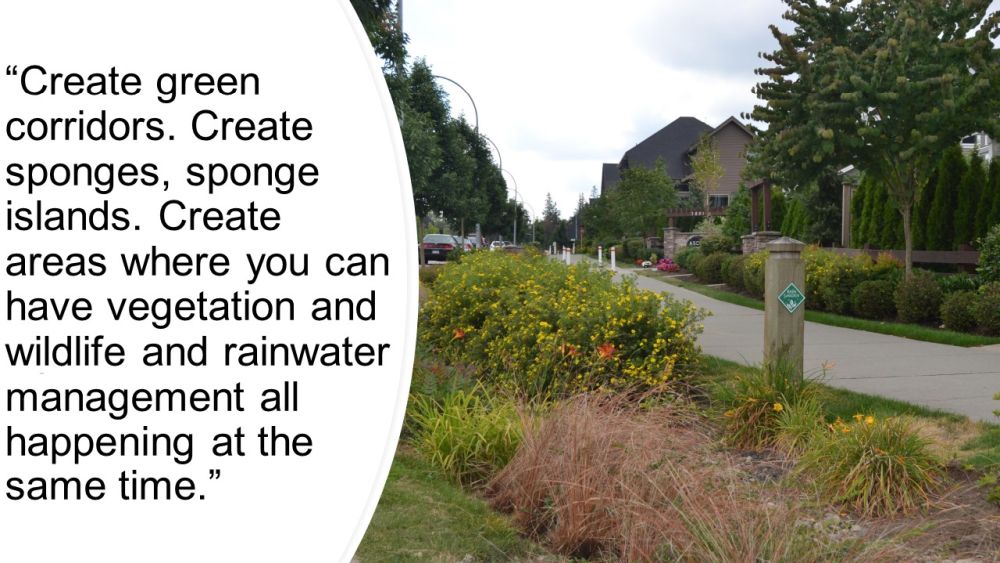
Instilling a culture takes years
“In my conversations with current and former senior level municipal staff around the Metro Vancouver region, there is a sense among them that the current generation of local government politicians appears more interested in appeasing a few people who are outspoken, as opposed to listening to the advice of their professional staff.”
“That is sad. That is why, more than ever, we need STRONGER CHAMPIONS and people who believe in what they are doing at heart.”
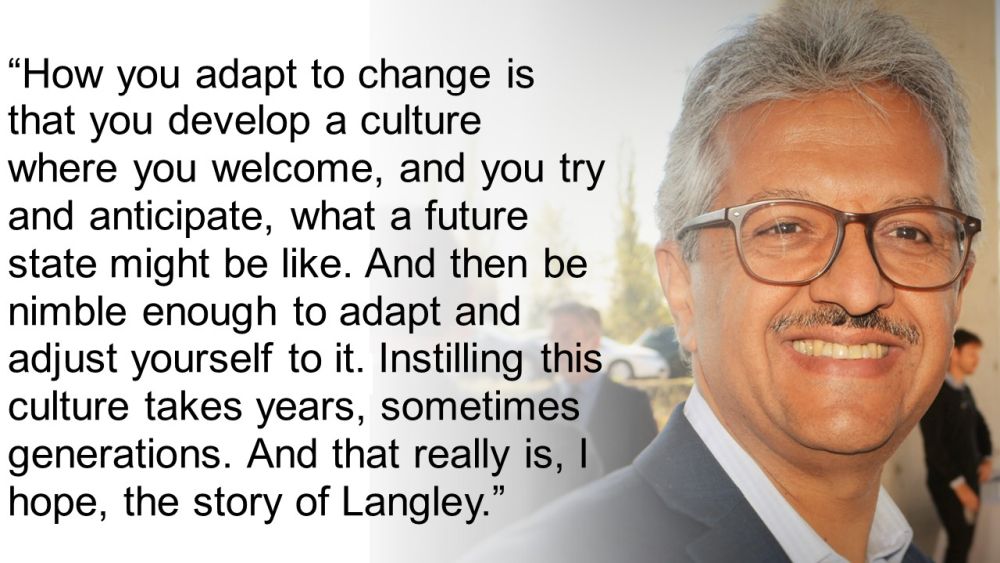
Living Water Smart in British Columbia Series
To download a copy of the foregoing resource as a PDF document for your records and/or sharing, click on Living Water Smart in British Columbia: Instill a culture that supports champions. The downloadable version includes a bonus feature in an appendix. The bonus is the synopsis of Langley’s green infrastructure innovation that the Partnership published in 2017. It posed the question, how does one instill a stewardship ethic in the corporate culture so that the legacy would be lasting?
DOWNLOAD A COPY: https://waterbucket.ca/wcp/wp-content/uploads/sites/6/2024/02/PWSBC_Living-Water-Smart_instill-a-culture_2024.pdf


